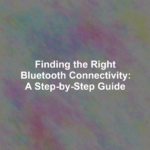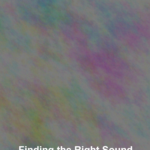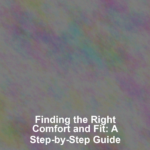Just as youG??re grappling with the incessant hum of city life or the unpredictable cacophony of a busy office, youG??ve stumbled upon the quest for silence. YouG??re not alone in your search for serenity, and the right noise reduction technology can be a game-changer.
ItG??s crucial to assess your environment and understand the type of noise youG??re dealing with before you leap into the vast array of options available. Whether itG??s for personal peace or professional necessity, sorting through the multitude of noise-canceling gadgets and soundproofing materials can be daunting. But donG??t worry; with a clear guide, youG??ll navigate through the technical jargon and marketing ploys to find the solution that fits your situation like a glove.
In the following steps, youG??ll discover how to identify your specific needs, what to look for in a product, and how to sift through the top contenders in the market. Stay tuned to uncover the key factors that will lead you to the quietude you seek.
Assess Your Noise Environment
To tackle noise pollution effectively, you must first understand the specific characteristics and sources of unwanted sound in your environment. Start by identifying whatG??s causing the noise. Is it traffic rumbling, neighborsG?? music, construction work, or something else? Pay attention to patterns: are these sounds constant or intermittent? Do they occur more during certain times of the day or week?
YouG??ll also need to consider volume and pitch. Louder, high-pitched sounds are typically more disruptive. Use an app or a decibel meter to measure noise levels; this will help you gauge the severity of the problem.
Remember, itG??s not just about loudness. The nature of the sound matters too. A continuous hum from an air conditioner might be less jarring than sporadic bursts of noise from a barking dog.
Once youG??ve pinpointed the noises and their patterns, youG??re in a better position to find the right noise reduction solutions. You might need soundproofing materials, white noise machines, or even policy changes like noise curfews in your community. The key is to match the technology to the specific issues youG??ve identified. DonG??t rush the process G?? taking the time to understand your noise environment is crucial for effective mitigation.
Explore Technology Types
Once youG??ve assessed your noise environment, delve into the array of technologies designed to curb unwanted sound. YouG??re looking for a solution that not only tackles the specific type of noise youG??re dealing with but also fits within your budget and space constraints.
Passive noise control methods, like soundproofing with insulation or mass-loaded vinyl, may suit you if youG??re targeting low-frequency noise. They donG??t require power and can be incredibly effective when installed correctly. On the other hand, if youG??re up against higher frequencies, consider diffusion or absorption panels that scatter or soak up sound.
For an active approach, you canG??t overlook noise-canceling technology. ItG??s more complex, relying on electronic components to create sound waves that effectively G??cancel outG?? the offending noise. This tech is perfect for personal use, say, with headphones, but itG??s also scaled up for larger environments.
You might also explore sound masking systems, which add background noise to reduce the perception of the sound youG??re trying to minimize. ItG??s counterintuitive, but it works wonders in office spaces where chatter and ringing phones are the norm.
Consider Product Features
As you evaluate the different noise reduction technologies, pay attention to product features that align with your specific requirements and environment. Consider the decibel reduction rating, which indicates how much sound is attenuated. If youG??re in a construction zone, youG??ll need something more robust than whatG??s required for a quiet office space.
YouG??ll also want to look at the frequency range. Some products are better at blocking out low-frequency noises, like the rumble of an engine, while others excel at high-frequency sounds, such as beeping alarms. Make sure the technology you choose matches the types of noise you encounter most often.
DonG??t overlook usability features. Can you install and operate the technology easily, or will it require professional help? Is it maintenance-heavy, or set-and-forget? Features like Bluetooth connectivity for electronic earmuffs or remote control for noise-canceling systems can also enhance your experience.
Lastly, consider the productG??s durability and warranty. You want a solution thatG??s built to last, especially if itG??s going to be used in harsh conditions. A good warranty can save you headaches and money down the line. So, weigh these features carefully and youG??ll find a noise reduction technology that not only works but works for you.
Compare Top Brands
When comparing top brands in noise reduction technology, consider their reputation for effectiveness, customer service, and innovation in the field. Brands like Bose, Sony, and Sennheiser are often at the forefront, offering a range of products known for their quality and reliability. Bose, for instance, has been a pioneer with its QuietComfort series, while SonyG??s WH-1000XM model is lauded for its industry-leading noise cancellation features.
YouG??ll want to look at customer reviews to gauge real-world performance. Are users satisfied with the noise reduction capabilities? How do they rate the comfort and battery life? These insights can be invaluable.
DonG??t overlook the support aspect. You might need assistance with setup or have questions down the line. A brand with responsive and helpful customer service can make all the difference.
Innovation is another critical factor. Brands that invest in research and development tend to stay ahead with features like adaptive noise cancellation and smart listening technologies. Check out their latest models to see how theyG??re pushing the boundaries.
Implement and Evaluate
To effectively harness the benefits of your chosen noise reduction technology, youG??ll need to implement it correctly and rigorously evaluate its performance in your specific environment. Start by carefully following the manufacturerG??s installation guidelines. If youG??re dealing with complex systems, consider hiring professionals to ensure optimal setup.
Once installed, test the technology under various conditions. Note the noise levels before and after implementation using a decibel meter. YouG??re looking for tangible improvements in sound quality and reduction. DonG??t forget to assess the impact on communication and workflowG??if noise reduction hampers these, you may need to adjust your approach.
Next, gather feedback from those affected by the noise and the new technology. Are employees noticing a difference? Are clients commenting on the change? Their insights can be invaluable for gauging success.
Lastly, review your noise reduction goals. Is the technology meeting or exceeding these objectives? If itG??s falling short, revisit your strategy. Maybe youG??ll need additional soundproofing materials, or perhaps a different product would serve you better. Remember, successful implementation isnG??t just about installing the technology; itG??s about achieving the desired acoustic environment and continuously monitoring for any needed adjustments.
Conclusion
YouG??ve navigated the noise reduction landscape, exploring tech options and weighing features against your needs. Comparing top brands gave you a clear view of the market.
Now, with your ideal solution implemented, take time to evaluate its impact. Is your space quieter? Are you more focused? If so, youG??ve successfully tamed the clamor. If not, donG??t fretG??adjustments can fine-tune performance.
Remember, the right noise reduction technology transforms your environment, boosting comfort and productivity.











